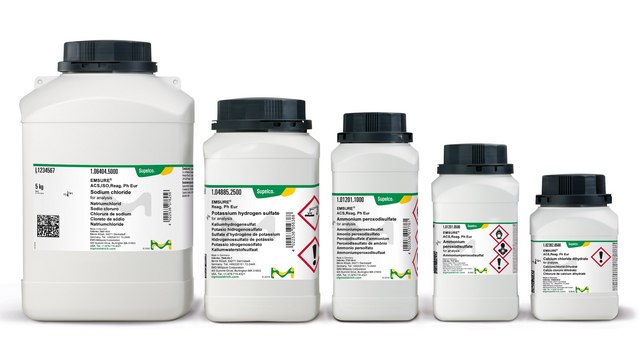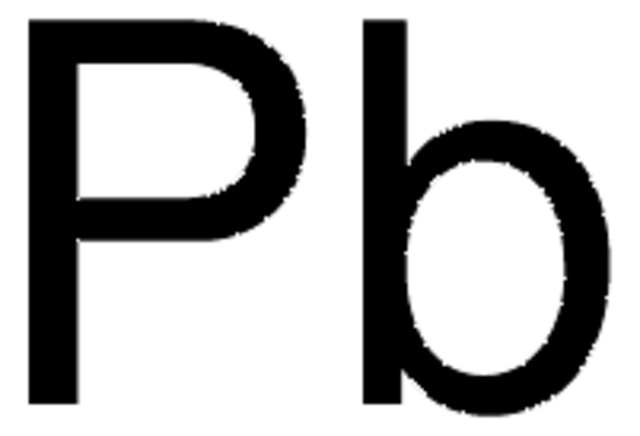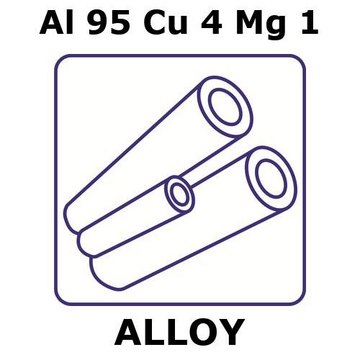GF64272584
Molybdenum
rod, 100mm, diameter 10.0mm, centerless ground, 99.9%
Synonym(s):
Molybdenum, MO007920
Sign Into View Organizational & Contract Pricing
All Photos(2)
About This Item
Empirical Formula (Hill Notation):
Mo
CAS Number:
Molecular Weight:
95.94
MDL number:
UNSPSC Code:
12141727
PubChem Substance ID:
NACRES:
NA.23
Recommended Products
Assay
99.9%
form
rod
manufacturer/tradename
Goodfellow 642-725-84
resistivity
5.0 μΩ-cm, 20°C
L × diam.
100 mm × 10.0 mm
bp
4612 °C (lit.)
mp
2617 °C (lit.)
density
10.3 g/mL at 25 °C (lit.)
SMILES string
[Mo]
InChI
1S/Mo
InChI key
ZOKXTWBITQBERF-UHFFFAOYSA-N
General description
For updated SDS information please visit www.goodfellow.com.
Legal Information
Product of Goodfellow
Regulatory Information
新产品
Choose from one of the most recent versions:
Certificates of Analysis (COA)
Lot/Batch Number
It looks like we've run into a problem, but you can still download Certificates of Analysis from our Documents section.
If you need assistance, please contact Customer Support.
Already Own This Product?
Find documentation for the products that you have recently purchased in the Document Library.
Ralf R Mendel
The Journal of biological chemistry, 288(19), 13165-13172 (2013-03-30)
The transition element molybdenum needs to be complexed by a special cofactor to gain catalytic activity. Molybdenum is bound to a unique pterin, thus forming the molybdenum cofactor (Moco), which, in different variants, is the active compound at the catalytic
Viswanathan S Saji et al.
ChemSusChem, 5(7), 1146-1161 (2012-06-14)
The electrochemical behaviors of molybdenum and its oxides, both in bulk and thin film dimensions, are critical because of their widespread applications in steels, electrocatalysts, electrochromic materials, batteries, sensors, and solar cells. An important area of current interest is electrodeposited
Chantal Iobbi-Nivol et al.
Biochimica et biophysica acta, 1827(8-9), 1086-1101 (2012-12-04)
Molybdenum cofactor (Moco) biosynthesis is an ancient, ubiquitous, and highly conserved pathway leading to the biochemical activation of molybdenum. Moco is the essential component of a group of redox enzymes, which are diverse in terms of their phylogenetic distribution and
Ralf R Mendel
Plant cell reports, 30(10), 1787-1797 (2011-06-11)
The transition element molybdenum (Mo) is of essential importance for (nearly) all biological systems as it is required by enzymes catalyzing important reactions within the cell. The metal itself is biologically inactive unless it is complexed by a special cofactor.
Courtney E Sparacino-Watkins et al.
The Journal of biological chemistry, 289(15), 10345-10358 (2014-02-07)
Mitochondrial amidoxime reducing component (mARC) proteins are molybdopterin-containing enzymes of unclear physiological function. Both human isoforms mARC-1 and mARC-2 are able to catalyze the reduction of nitrite when they are in the reduced form. Moreover, our results indicate that mARC
Our team of scientists has experience in all areas of research including Life Science, Material Science, Chemical Synthesis, Chromatography, Analytical and many others.
Contact Technical Service








